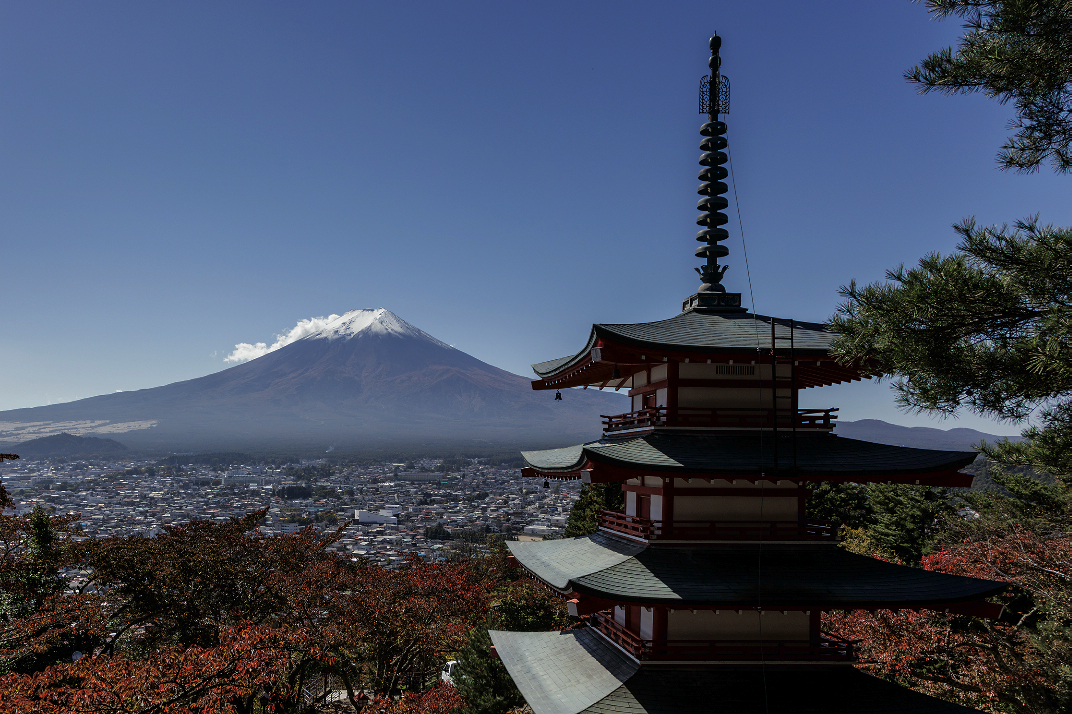
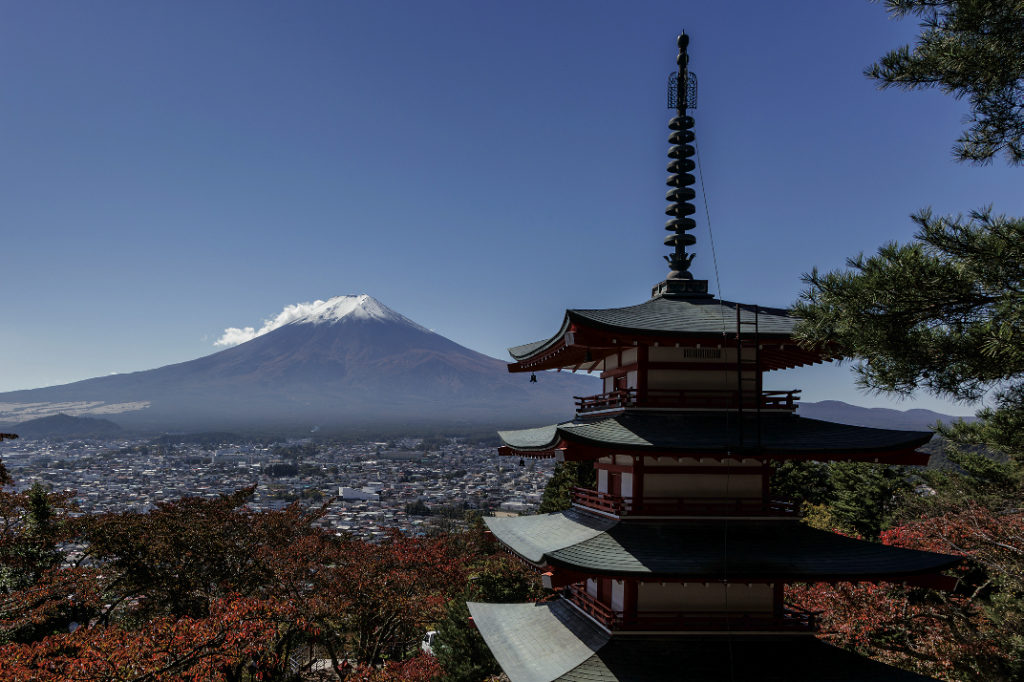
There are many treasures in the lakeland region surrounding the famous volcano, including the Itchiko Kubota Art Museum.
At the foot of Mount Fuji is a region full of lakes, waterfalls and caves with stunning natural landscapes. Two hours out of Tokyo, the region of Fujigoko or “the five lakes” offers interesting prospects for a day’s hike far from the bustling metropolis. Lake Kawaguchiki, famous for reflecting the image of the most celebrated volcano in the country, is the easiest of the five lakes to reach from the capital. Along its northern shore, nestled in the heart of the wooded hills, is a fascinating museum dedicated to Kubota Itchiku, a dyer and artist. This exceptional man committed his life to recreating tsujigahana, the lost art of dyeing kimonos, popular in 15th century Japan.
As soon as you step into to his world you’re enraptured. The gardens, the buildings, the collection of kimonos, the artist’s work — they all contribute to the magic of this place. It is a journey that takes you out of this world and time. Born in 1919 in Tokyo, Kubota was apprenticed at 14 years of age to Kobayashi Kioshi, a master of the technique of yuzen dyeing. At 20, when he visited the National Museum of Tokyo, he had his first encounter with a dyed tsuijigahana garment dating from the Muromachi period (15th century). He lingered in front of this work of art, fascinated by its beauty, and swore then that he would succeed in rediscovering this technique, which had been lost for over 300 years. This effect is a far more elaborate type of “tiedyeing” (tying fabric before dyeing) than you would see on any hippy’s T-shirt.
During the Second World War Kubota was sent to Siberia as a prisoner. This period of his life, though traumatic, in no way diminished his determination to reproduce the tsuijigahana technique. On the contrary, each day that he watched his fellow countrymen die of hunger and cold he swore that he would survive and succeed in reproducing the magnificent Siberian sunsets using the technique on kimonos made of silk. On his return from captivity the artist threw himself obsessively into years of research in order to reproduce the famous method of dyeing. After twenty years of perseverance he succeeded. In 1977, when he was already sixty years old, his kimonos were exhibited in the capital for the first time, then very soon throughout the whole world.
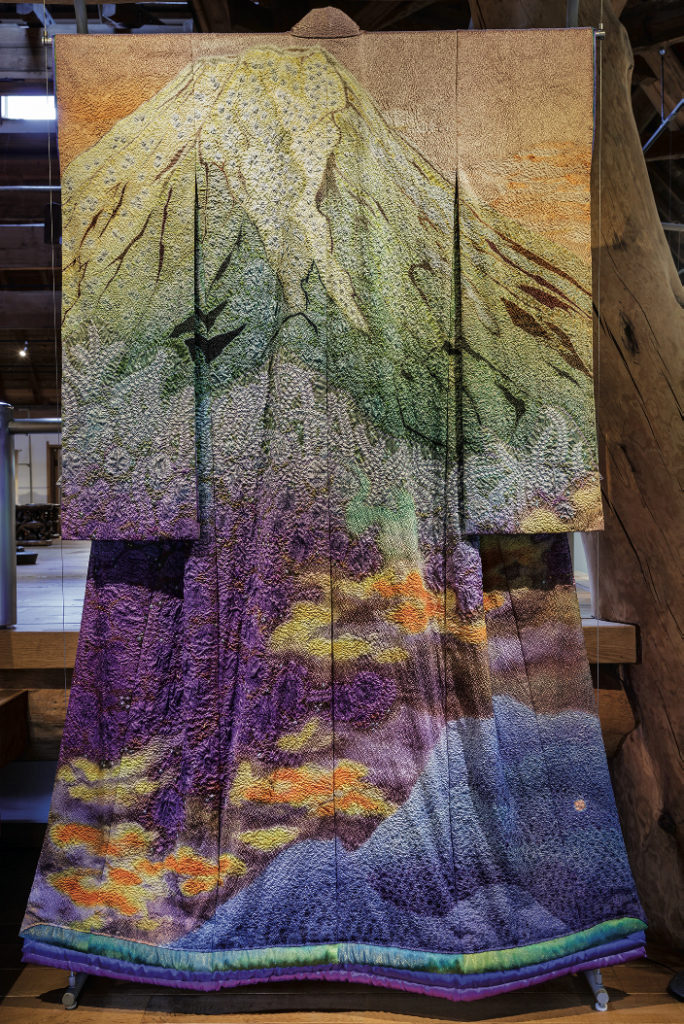
But let us get back to the museum. The structure of the principal building where the kimonos are on display combines traditional Japanese construction techniques with those from the west. Turning your gaze upwards you can admire the pyramid shape of the roof frame supported by sixteen wooden beams that are more than a thousand years old. Following the artist’s wishes, there is no glazing or barrier between you and the works of art. You will be able to appreciate both the colours and the minute details of the patterns close up. Natural light filters through the glass summit of the pyramid onto the most precious kimonos, displayed on a raised stage in the centre of the building. Among them is “San” or “Burning Sun”, the first ever kimono made by the artist in tribute to the Siberian sunsets. Brought together for a collection called “Symphony of Light”, the kimonos on display change every three to four months depending on the seasons. This collection illustrates the grandeur of the universe through the depiction of the four seasons and Mount Fuji. Displayed end to end, these kimonos create real landscapes, “like a series of prints”, the museum director explains.
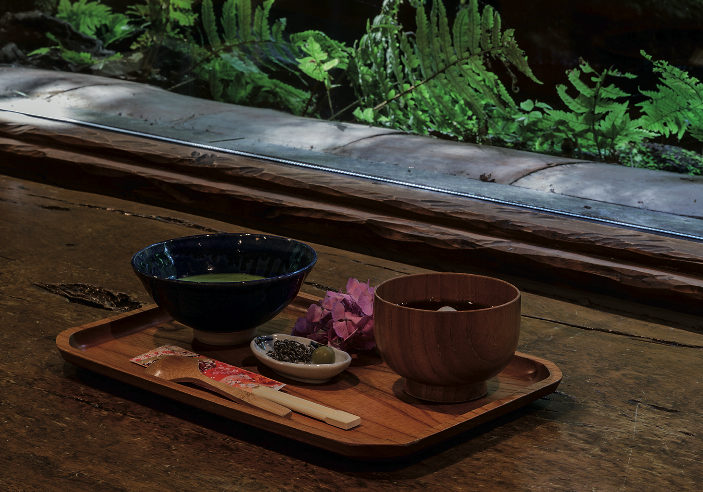
Continue your visit with a walk around the museum’s garden, which was also conceived by the artist. Art works from Asia and Africa are assembled here. Follow the stream under the pines to the waterfalls and you’ll reach a small cave made of lava stone from Mount Fuji. A small statue of a bodhisattva rests here, a bit kitsch, but not without charm. Depending on the time of year you’ll be able to admire the cherry trees in bloom, azaleas, or simply the beautiful leaves of the trees: soft green in spring or dazzling shades in autumn. The many different autumnal shades of reds, yellows and browns are unlike any found outside Japan.
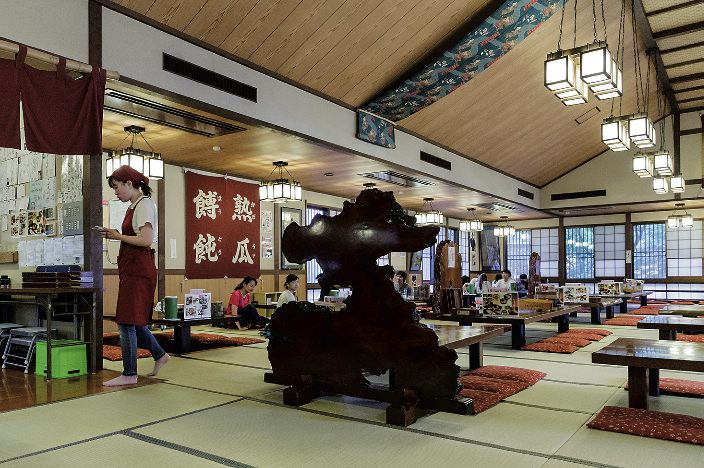
Fujiyoshida is only 10 minutes away by train, and a short walk from the station is Arakurayama Sengen Park, one of the best places from which to enjoy a view of the iconic volcano. You will soon understand why a famous English guidebook chose an image of the Chureito Pagoda to illustrate the front cover of their previous publications. The pagoda has five vermillion lacquered floors, and was built in 1963 as a peace memorial. It is part of Arakura Sengen Shrine, 10 minutes away by train from Kawaguchiko. Leave the train at Shimo-Yoshida on the Fujikyo line, then walk for 10 minutes to reach the site. When the cherry trees are in bloom, and in autumn, the pagoda attracts crowds of photographers wanting to capture Mount Fuji at its best. In order to enjoy this view you’ll have to climb 400 steps, but it is well worth the effort!
If you are staying for several days in this part of Japan, take some time to explore all five lakes located on the northern side of Mount Fuji near Fujiyoshida. Many printed hiking guides with views of Mount Fuji are available at the Kawaguchiko Tourist Office. And after all that effort, why not treat yourself to some comfort? Do as the Japanese do and allow yourself to be tempted by the winning combination of hiking and onsen. Enjoy a moment of relaxation and calm at one of the many hot springs in the area before heading back towards the bustle of the capital city.
How To Get There
To get from Tokyo to Kawaguchiko station, the easiest way is to catch a bus from Shinjuku (Bus terminal), from Shibuya (Mark City) or from Tokyo station (Yaesu South Exit). The trip takes about two hours. Take care, as the Japan Rail pass is not valid on these buses. It will cost around 1,800 yen for a return ticket.
From Kawaguchiko station to Itchiku Kubota Art Museum, take the Retrobus from the station to the Kubota Itchiku Bijutsukan bus-stop. It takes about 25 minutes.
RAPHAÈLE LESORT
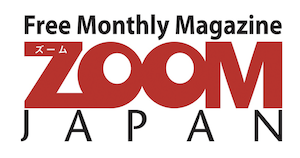
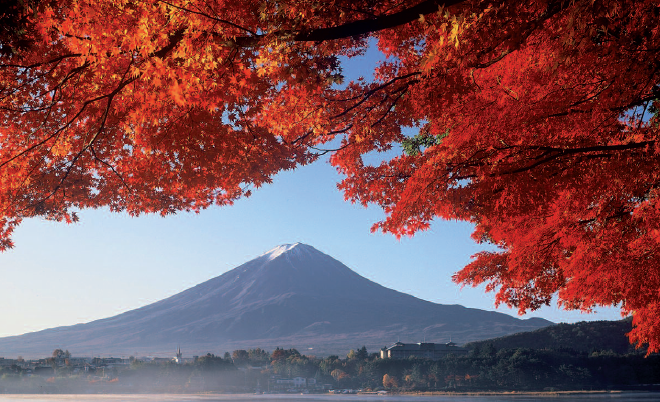
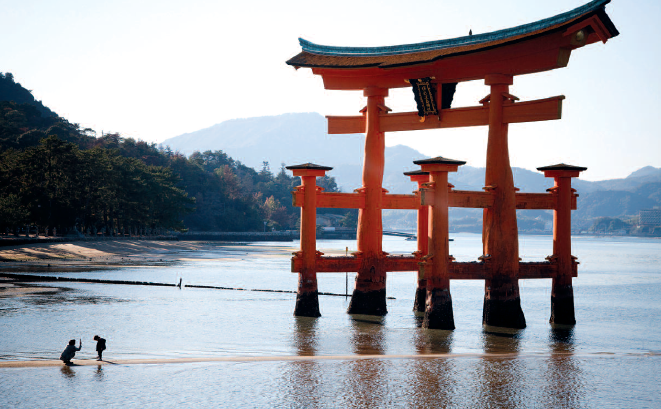
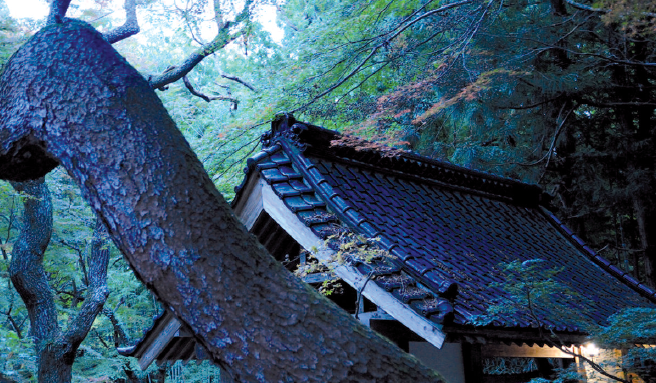
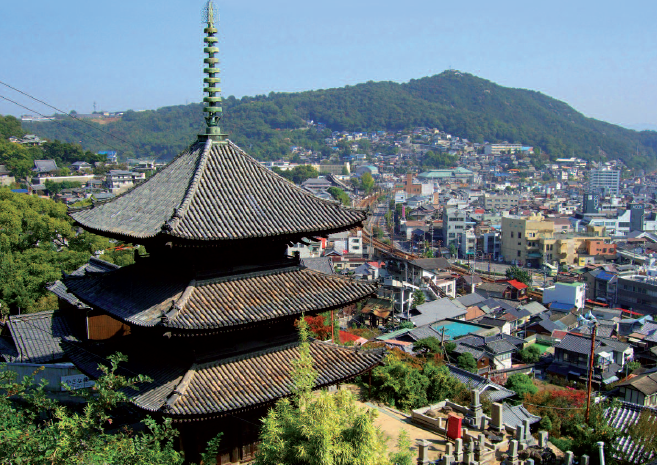
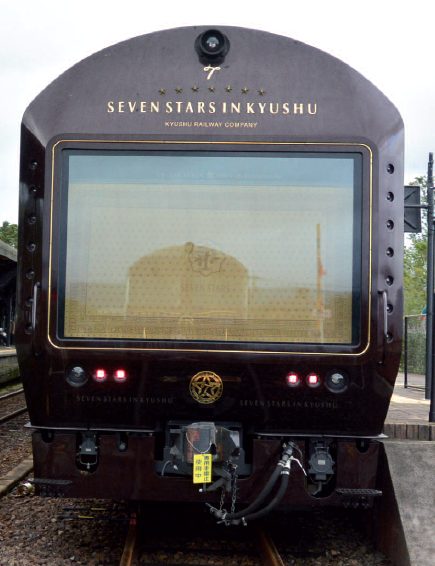
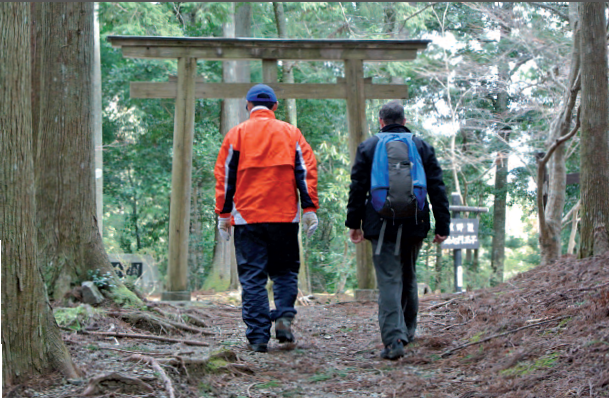
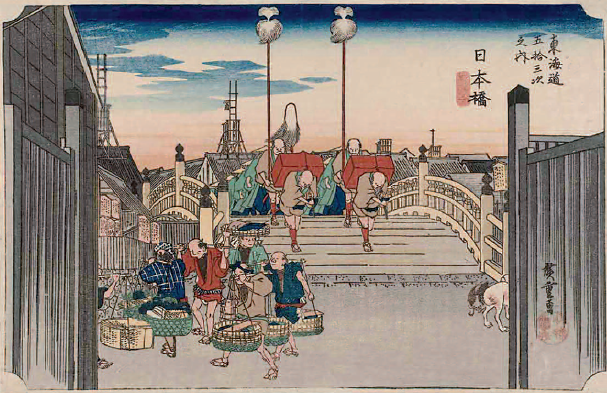

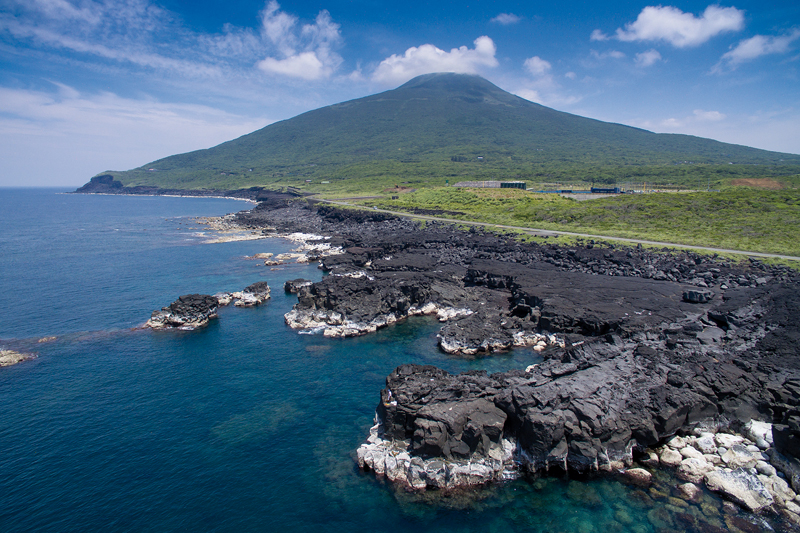
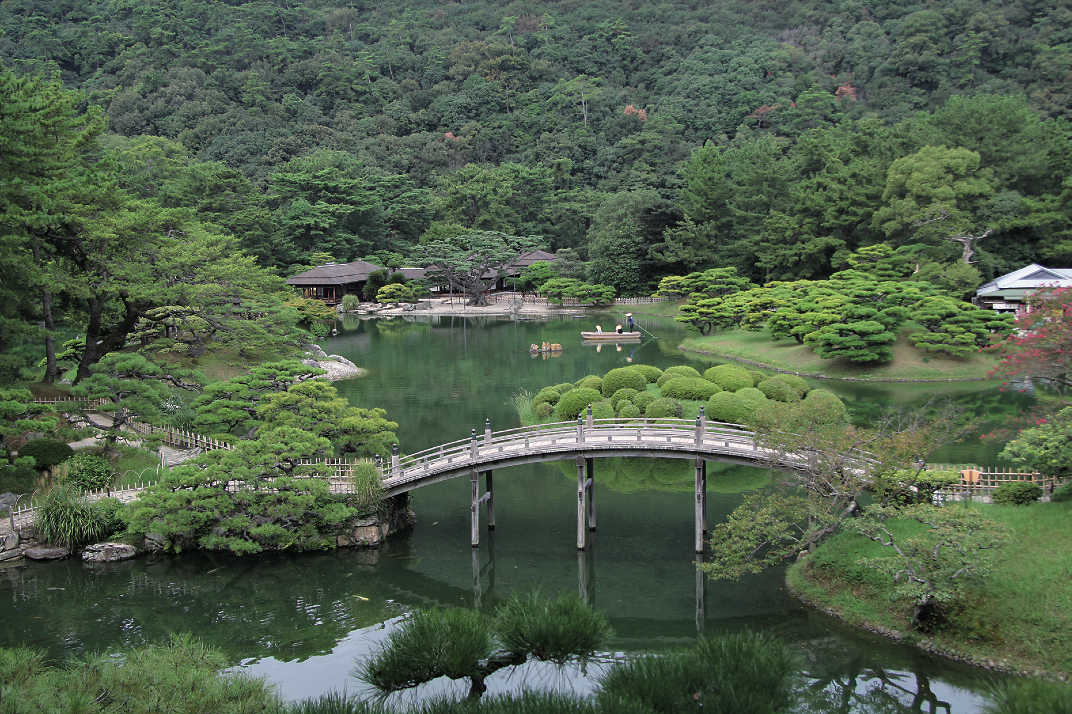
Leave a Reply